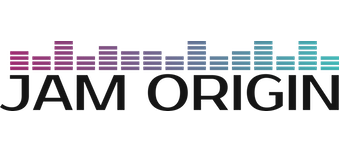What is the best/fastest sound card that will best match MG2 ?
10 different people will give you 10 different answers, each based on their own biases.
Questions:
-
Mac or Windows?
-
For MG2 only or additional uses?
-
Any DAW or plugin host like Gig Performer?
-
Multi-client ASIO driver desired?
-
Instrument input needed (direct guitar connection to sound card)?
-
Mic input needed (acoustic guitar played into a mic)?
-
Budget?
For example, I use a PreSonus 1810c. It has 4 mic inputs (plus 4 line level inputs), 2 of which can be configured as instrument inputs. Its Windows driver is NOT multi-client, so I can’t have Windows configured to use the 1810c as its sound card AND have MG2/MB standalone configured to use it as well (for playing along with YouTube backing tracks, e.g.). It costs about $400.
IK Multimedia has a guitar-centric sound card called the AXE I/O that’s about the same price. For an extra $50, you can get AmpliTube 5 Max with it. That’s a good deal for AT5Max.
Hello Jacques, welcome to this forum ![]()
As I was writing my reply, @John replied before me but I’m posting my opinion anyway which is quite similar.
Most current audio interfaces will be able to handle MG2 without latency problems and with acceptable audio quality. The differences will depend on your audio quality requirements, the number of devices used in addition to MG2 and the quality of your equipment.
Remember that the audio interface is only one part of the chain: it is best to choose an audio interface with a budget that matches the quality and performance of the rest (computer, drivers, software, plugins, sound diffusion system).
Consider first the choice of audio interface according to your needs and not only for MG2:
- number and type of inputs: analog (mics, lines, instruments), digital (preamps).
- number and type of outputs: analog, digital (several headphones or monitor speakers, amps).
- MIDI inputs/outputs if using external MIDI devices.
- preferred hardware format according to the type of use (studio, live): rack, desktop, floorboard…
Then, consider your budget as said before: the price of a decent audio interface for a simple and average quality equipment will cost around 100€.
I personally started out using a 120€ audio interface to play with MG2 alone on stage for years and it gave me full satisfaction (2xin/2xout).
I have since upgraded due to the complexity and resource demands of my equipment and the need for multi-client use of the audio interface which I paid 800€ (4xin/4xout).
This is for performing alone on stage with a narrator.
I didn’t want to give references because it’s up to you to orient yourself according to your own needs, but now that John has mentioned some names, I’m doing the same: ![]()
- 1st soundcard: Steinberg UR22 MKII (very important: not multiclient first reason I gave it up).
- 2nd soundcard: RME Babyface Pro FS
Cool thanks gays,
I use either Apogee Jam+ or UA Twin X.
I insert either Halion 6 or Kontakt.
I have a MacBook pro 16’ with 64 Go.
If I put the lowest latency (64ms), I hâve overload sometimes.
Si, my question is, what are your setting to get the best results in term of latency and efficiency ?
Thanks a lot anyway, mindwave regards
Jacques
Excellent device, keep your Jam+ aside for possible use in nomadic mode. ![]()
The higher the number of samples in the buffer, the more you will avoid audio artefacts (scratches, glitches,…).
On the one hand, each individual has a more or less fine perception of the latency and on the other hand each midi instrument played will make the latency more or less noticeable: an ethereal sound sound will not be annoying with a high latency but a percussive sound will make a too high latency immediately noticeable.
The best way to find your own latency setting is to start playing a percussive sound (piano, snare,…) at 64s then increase.increase the latency (64, 96, 128, etc) and listen if the latency starts to become noticeable and uncomfortable. At that point you reduce the latency to the previous test and you’re all set.
I play between 128s and 256s with no problem.
